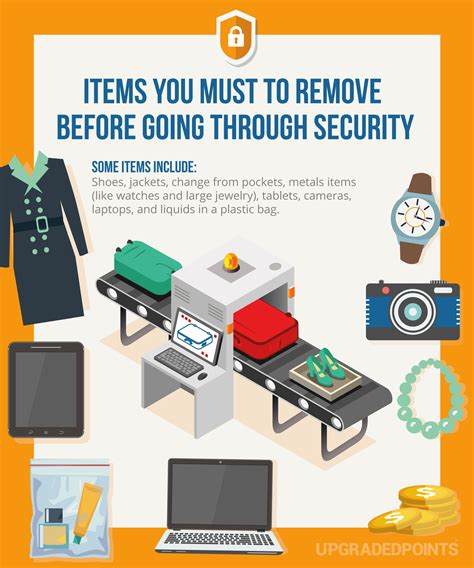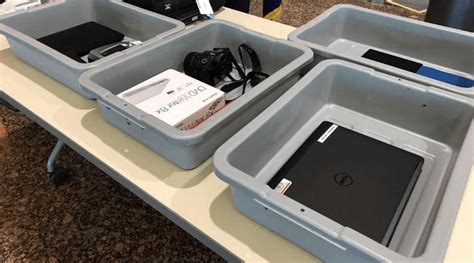
Wallets are reportedly the most frequently stolen items at airport security checkpoints, prompting security experts to advise travelers to keep their wallets on their person rather than placing them in bins. According to travel experts, the common practice of emptying pockets and placing valuables in bins can create an opportunity for theft.
Travelers are being warned about a surprising security risk at airports: wallets are reportedly the most commonly stolen items at TSA checkpoints. The advice comes as security lines become increasingly congested, and the practice of removing items from pockets to expedite screening has inadvertently created opportunities for theft.
“The number one item that’s stolen at the TSA checkpoint is wallets,” said Brooke Harmer, a travel expert. The advisory emphasizes that while travelers are focused on complying with security procedures, they may become momentarily distracted, making their belongings vulnerable. The recommendation is straightforward: “Keep your wallet on you at all times.”
Theft at Security Checkpoints: An Overlooked Risk
While airport security measures are primarily designed to prevent threats to aviation safety, the process itself can present a window of opportunity for petty theft. As passengers rush to remove belts, shoes, laptops, and other items, wallets can become an easy target. The congestion and fast pace of security lines can make it difficult for travelers to keep a constant eye on their belongings, increasing the risk.
The issue extends beyond mere inconvenience. A stolen wallet can lead to significant financial loss, identity theft, and a cascade of administrative headaches. Replacing credit cards, driver’s licenses, and other essential documents can be time-consuming and stressful, particularly when traveling.
Why Wallets Are Prime Targets
Several factors contribute to the vulnerability of wallets at security checkpoints:
- High Value: Wallets often contain cash, credit cards, and identification documents, making them attractive to thieves.
- Easy Access: Wallets placed in bins are readily accessible and can be quickly snatched.
- Distraction: Travelers are often preoccupied with the screening process, making them less attentive to their surroundings.
- Congestion: Crowded security lines provide cover for thieves to operate discreetly.
- Momentary Lapses: The brief moments when travelers are separated from their belongings as bins move through the X-ray machine create opportunities for theft.
Expert Recommendations: Keeping Your Wallet Safe
To mitigate the risk of wallet theft, experts recommend the following precautions:
- Keep Your Wallet On You: The most effective strategy is to keep your wallet in a secure pocket or bag at all times. Front pockets are generally considered safer than back pockets.
- Use a Money Belt or Neck Wallet: For added security, consider using a money belt or neck wallet to conceal your valuables.
- Maintain Visual Contact: Keep your belongings within sight as they move through the screening process.
- Be Aware of Your Surroundings: Pay attention to the people around you and report any suspicious behavior to TSA personnel.
- Retrieve Your Belongings Promptly: Once your items have passed through the X-ray machine, retrieve them immediately and ensure that nothing is missing.
- Consider TSA PreCheck: Enrolling in TSA PreCheck can expedite the screening process and reduce the need to remove items from your pockets. This can lower the risk of theft by minimizing the time your wallet is exposed.
- Report Any Theft Immediately: If you discover that your wallet has been stolen, report it to the TSA and local law enforcement as soon as possible. Also, notify your bank and credit card companies to cancel your cards and prevent unauthorized transactions.
The TSA’s Perspective
The Transportation Security Administration (TSA) acknowledges the risk of theft at security checkpoints and advises travelers to take precautions to protect their belongings. While the TSA’s primary focus is on security screening, agency officials emphasize the importance of personal responsibility in safeguarding valuables.
The TSA provides the following recommendations for protecting your belongings at security checkpoints:
- Keep valuables in your carry-on bag: This reduces the need to remove them during screening.
- Maintain visual contact with your belongings: Ensure that you can see your items at all times.
- Report any suspicious activity to TSA personnel: If you observe anything that seems out of place, notify a TSA officer immediately.
The TSA also encourages travelers to report any instances of theft to local law enforcement. While TSA officers are not law enforcement officials, they can assist in the investigation and provide security footage if available.
The Broader Context: Airport Security and Theft
Wallet theft at security checkpoints is just one aspect of a broader issue of theft at airports. Luggage theft, pickpocketing, and other forms of petty crime are common occurrences in busy airports around the world.
Several factors contribute to the prevalence of theft at airports:
- High Volume of Passengers: Airports are crowded places, making it easier for thieves to blend in and operate undetected.
- Transient Population: Many passengers are unfamiliar with the airport and its surroundings, making them more vulnerable to scams and theft.
- Stress and Fatigue: Travel can be stressful and tiring, which can impair passengers’ judgment and make them less attentive to their belongings.
- Opportunity: The fast pace and distractions of airport environments create opportunities for thieves to target unsuspecting travelers.
Preventative Measures Beyond the Checkpoint
While security checkpoints pose a specific risk, travelers should remain vigilant throughout their airport experience. Here are some additional tips for preventing theft:
- Keep your luggage within sight: Never leave your luggage unattended, even for a moment.
- Use a luggage lock: Secure your luggage with a TSA-approved lock to deter theft.
- Be wary of strangers: Avoid engaging with strangers who offer unsolicited assistance or seem overly friendly.
- Protect your personal information: Be careful when using public Wi-Fi networks and avoid entering sensitive information on unsecured websites.
- Carry your valuables in a secure bag: Use a cross-body bag or backpack with hidden pockets to keep your valuables safe.
- Consider travel insurance: Travel insurance can provide coverage for lost or stolen belongings.
Technological Solutions for Enhanced Security
Advancements in technology are also playing a role in enhancing airport security and preventing theft. Surveillance cameras, facial recognition software, and other technologies are being used to monitor airport environments and identify suspicious individuals.
- Surveillance Systems: High-resolution cameras with advanced video analytics can detect unusual behavior and alert security personnel.
- Facial Recognition: Facial recognition technology can identify known criminals and individuals on watch lists.
- RFID Tracking: Radio-frequency identification (RFID) tags can be used to track luggage and other valuable items.
- Smart Luggage: Smart luggage with built-in GPS tracking can help travelers locate lost or stolen bags.
The Impact on Travelers
The risk of theft at airport security checkpoints and throughout the airport environment can have a significant impact on travelers. In addition to the financial loss and inconvenience of replacing stolen items, theft can also cause emotional distress and anxiety.
Many travelers report feeling violated and distrustful after being victimized by theft. The experience can also undermine their confidence in airport security and make them hesitant to travel in the future.
Building a Culture of Security Awareness
Addressing the issue of theft at airports requires a multifaceted approach that involves collaboration between airport authorities, security agencies, law enforcement, and travelers. Building a culture of security awareness is essential to deterring theft and protecting passengers’ belongings.
This includes:
- Public awareness campaigns: Educating travelers about the risks of theft and providing tips for protecting their belongings.
- Increased security patrols: Deploying more security personnel to patrol airport terminals and monitor security checkpoints.
- Improved surveillance systems: Installing advanced surveillance cameras and video analytics to detect suspicious activity.
- Collaboration with law enforcement: Working closely with local law enforcement to investigate and prosecute theft cases.
- Empowering travelers: Encouraging travelers to report any suspicious activity and take an active role in protecting their belongings.
By working together, airport stakeholders can create a safer and more secure environment for travelers.
Case Studies: Real-Life Experiences of Theft at Airports
Numerous reports and anecdotal evidence highlight the prevalence of theft at airports. Here are a few examples:
- The Case of the Missing Laptop: A business traveler reported having his laptop stolen from a security bin while he was going through the body scanner. He only realized it was missing after he had reassembled his belongings on the other side of the checkpoint.
- The Pickpocketed Tourist: A tourist visiting a foreign country had her wallet stolen from her purse while waiting in line at the check-in counter. She was distracted by the unfamiliar surroundings and didn’t notice the thief until it was too late.
- The Luggage Thief: A family arrived at their destination to discover that their luggage had been tampered with, and several valuable items were missing. They suspected that the theft occurred while their luggage was in transit.
These cases illustrate the diverse ways in which travelers can become victims of theft at airports. They also underscore the importance of remaining vigilant and taking precautions to protect your belongings.
Future Trends in Airport Security and Theft Prevention
As technology continues to evolve, new solutions are being developed to enhance airport security and prevent theft. Some of the emerging trends include:
- Biometric Identification: Using biometric data, such as fingerprints or facial scans, to verify passenger identity and track luggage.
- Artificial Intelligence: Employing AI-powered systems to analyze security footage and detect suspicious behavior in real-time.
- Blockchain Technology: Utilizing blockchain to create a secure and transparent system for tracking luggage and preventing theft.
- Enhanced Screening Technologies: Developing more advanced screening technologies that can detect threats without requiring passengers to remove items from their bags.
These innovations hold the potential to significantly improve airport security and reduce the risk of theft.
The Role of Personal Responsibility
While airport authorities and security agencies play a crucial role in preventing theft, personal responsibility is equally important. Travelers must take proactive steps to protect their belongings and remain vigilant throughout their airport experience.
By following the recommendations outlined in this article and staying aware of their surroundings, travelers can significantly reduce their risk of becoming victims of theft.
Conclusion
Wallet theft at airport security checkpoints is a real and concerning issue that travelers should be aware of. By keeping wallets on their person, maintaining visual contact with their belongings, and reporting any suspicious activity, travelers can minimize their risk of becoming victims. Airport authorities and security agencies must also continue to invest in security measures and collaborate with law enforcement to deter theft and create a safer environment for travelers. While the TSA focuses on larger security threats, petty theft thrives in the busy environment of security checkpoints. Staying vigilant and taking precautions remains the best defense.
Frequently Asked Questions (FAQ)
-
What is the most common item stolen at airport security checkpoints?
According to travel experts, wallets are reportedly the most frequently stolen items at airport security checkpoints. This is because travelers often place them in bins along with other personal items, creating an opportunity for theft while they are distracted with the screening process.
-
What can I do to protect my wallet at airport security?
The best way to protect your wallet is to keep it on your person at all times, preferably in a front pocket or a secure bag. Avoid placing it in the bins provided for security screening. Other tips include using a money belt or neck wallet, maintaining visual contact with your belongings, and being aware of your surroundings.
-
What does the TSA say about theft at security checkpoints?
The TSA acknowledges the risk of theft at security checkpoints and advises travelers to take precautions to protect their belongings. They recommend keeping valuables in carry-on bags, maintaining visual contact with belongings, and reporting any suspicious activity to TSA personnel. While the TSA’s primary focus is on security screening, they emphasize personal responsibility in safeguarding valuables.
-
If my wallet is stolen at airport security, who should I report it to?
If you discover that your wallet has been stolen, report it to the TSA and local law enforcement as soon as possible. Also, notify your bank and credit card companies to cancel your cards and prevent unauthorized transactions. Filing a police report is essential for insurance purposes and to aid in any potential investigation.
-
Does TSA PreCheck help reduce the risk of theft at security checkpoints?
Yes, enrolling in TSA PreCheck can help reduce the risk of theft because it expedites the screening process, minimizing the need to remove items from your pockets. This means your wallet is less likely to be placed in a bin and left unattended, reducing the opportunity for theft. It also lessens overall stress and distraction during security checks.






